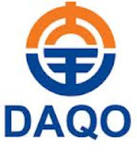大全新能源 (DQ.US) 2025年第三季度业绩电话会
文章语言:
简
繁
EN
Share
Minutes
原文
会议摘要
Daco New Energy reported positive Q3 2025 EBITDA and net income, driven by higher selling prices and lower production costs, achieving $45.8M EBITDA and $3.7M net income. Sales volume surged 40% to 42,406 metric tons, with production costs down 12% to $6.38/kg. The company forecasts continued cost reductions and positive margins in Q4, aiming to leverage long-term solar PV industry growth and consolidate as a leading polysilicon producer.
会议速览
The conference call discusses Daco New Energy's Q3 2025 financial results, market conditions, and operational updates, with forward-looking statements and risk disclosures. The Deputy CEO delivers management remarks, while the CFO covers financial performance, followed by a Q&A session.
The company reported a positive Ebitda and adjusted net income for Q3 2025, attributing its recovery to significant price rebounds and proactive market strategies. With a robust cash balance and reduced production costs, the company is well-positioned to navigate market challenges and capitalize on long-term opportunities. Sales volume surged, outpacing production, and inventory levels were brought to a healthy state, reflecting customer confidence in product quality.
President Xi announced China's 2035 environmental targets, aiming for 30% renewable energy use and 3600 GW solar capacity. The government is cracking down on low-price competition in the PV sector, promoting industry self-discipline, and implementing new energy consumption standards. These measures are expected to improve industry fundamentals and foster sustainable growth, positioning China to capture long-term opportunities in the global solar PV market.
The CFO of DoCoMo Energy discussed Q3 2025 results, highlighting increased revenue and gross margin, adjusted net income, and cash position. Revenue rose due to higher sales volume and prices. Gross margin improved significantly. Cash and investments decreased from prior periods, with substantial use of cash in operating and investing activities.
A CFO discusses achieving positive gross margins in Q3, driven by price increases and cost reductions, projecting Q4 to also be positive with ongoing cost efficiency efforts.
The dialogue discusses strategies to manage overcapacity in China's polysilicon sector post-overhaul, focusing on balancing supply with demand through reduced utilization rates, industry consolidation, and potential government-imposed energy consumption standards. Industry initiatives and government actions are highlighted as key factors in achieving a more sustainable market equilibrium.
Discussions on industry consolidation are ongoing, with emphasis on mechanisms ensuring quota compliance. A price recovery has been observed, and further increases are anticipated if consolidation succeeds. Multiple parties, including government entities, are involved in the process, requiring diligence for consensus.
The company anticipates continued cost reductions, particularly in Q4, with a decline in overall and cash costs. Consolidation initiatives are expected to stabilize the supply chain, with prices ranging from 49 to 55 RMB per kilogram in Q4, potentially rising to 60 RMB post-consolidation, influenced by capacity exits.
The company has paused its share repurchase program due to market price increases and uncertainty around consolidation investments. Clarity on capital expenditure is expected by Q4, potentially allowing for a resumption of share buybacks.
The dialogue discusses the timing of initiating a share repurchase, suggesting it should occur after gaining clarity on the consolidation efforts, with the process potentially starting a couple of months after the first quarter.
The dialogue discusses the impact of capacity upgrades on production costs, highlighting reduced cash costs and optimized energy use. Unit electricity consumption for production is reported to be within 52 to 55 kW per kilogram, varying between facilities.
Discusses rationale behind increasing production plans despite industry trends, citing recovery in prices, consolidation, and energy consumption proposals as drivers for a more optimistic future outlook, with a focus on reducing production costs by increasing volume.
The speaker acknowledges a reasonable assumption about 2026, thanks the responder, and proceeds to pass the question to the next investor, expressing gratitude before ending the interaction.
A discussion on potential gross margins based on polysilicon prices, current inventory sales strategies, and expectations for solar installations in China's upcoming five-year plan.
The dialogue forecasts China's solar installations for the next year to be stable or with low single-digit growth compared to this year's range of 2.2 to 50 GW, potentially reaching around 270-280 GW total by next year.
The Q&A session ended with an expression of gratitude towards participants, an invitation to reach out for additional inquiries, and a formal closure of the conference call.
要点回答
Q:What are the financial results for Daco New Energy's third quarter of 2025?
A:Daco New Energy recorded positive Ebitda of 45.8 million US dollars and adjusted net income of 3.7 million US dollars for the third quarter of 2025.
Q:What measures did the company take to counteract market oversupply, and what was the result?
A:The company implemented proactive measures to counteract market oversupply, resulting in a capacity rate of 40%, total production of 30,065 metric tons slightly above guidance, and a sharp rise in sales volume to 42,406 metric tons from 18,126 metric tons in the previous quarter.
Q:How did production costs change during the third quarter of 2025?
A:Total production costs declined by 12 percent to 6.38 US dollars per kilogram in Q3 2025 from 7.26 US dollars per kilogram in the second quarter of 2025. Total idle facility related costs also fell to 1.18 from 1.38, driven by higher production levels.
Q:What are the new 2035 environmental targets announced by President Xi?
A:President Xi announced new 2035 environmental targets which include increasing the share of renewables in total energy consumption to 30%, reaching a solar power capacity of 6 billion watts (6 GW), and achieving a total capacity of 360 GW by 2035.
Q:What actions are being taken to address low price competition in the polysilicon sector?
A:The Chinese government is continuing its initiative to restrict low price competition in the polysilicon sector, which has improved industry fundamentals by creating expectations of consolidation and tighter supply. A meeting on the photovoltaic industry emphasized the need to strengthen industrial regulation, curbing low price competition, standardizing product quality, and promoting industry self-discipline.
Q:What is the new mandatory national standard for energy consumption per unit of polysilicon production?
A:A new mandatory national standard was released, setting energy consumption limits per unit of polysilicon production. Poly silicon manufacturers with unit energy consumption higher than 6.4 kilograms must implement corrective improvements within a specified period, failing which may result in the ordering of operations cessation.
Q:What is Daco New Energy's position in the global solar PV market?
A:Daco New Energy is well positioned to capture the long-term growth in the global solar PV market, given the strong long-term growth prospects of the solar PV industry and the expected continued role of solar power as a key driver of global energy transition and sustainable development.
Q:What factors contributed to the increase in revenue and gross profit in Q3 2024 compared to Q2 2025?
A:The increase in revenue in Q3 2024 compared to Q2 2025 was primarily due to an increase in sales volume and average selling price. The gross profit increased due to a decrease in production costs, the write-off of inventory impairment provisions, and an increase in the average selling prices of polysilicon.
Q:How did the company's gross margin improve in Q3 2024 compared to Q2 2025?
A:The gross margin improved in Q3 2024 compared to Q2 2025 primarily because of the increase in the average selling price of polysilicon, a decrease in production costs, and the write-off of inventory impairment provisions.
Q:What was the change in the company's operating loss from Q2 2025 to Q3 2024, and what factors contributed to it?
A:The operating loss decreased from $115 million in Q2 2025 to $20.3 million in Q3 2024. This decrease was primarily due to the increase in the average selling price of polysilicon, a decrease in production costs, and the write-off of inventory impairment provisions. General and administrative expenses and research and development expenses also played a role in the overall loss, with a non-cash share-based compensation cost and lower R&D expenses in Q3 2024 contributing to the reduction in loss.
Q:What were the company's net cash used in operating activities and net cash used in investing activities for the nine months ended September 30, 2025?
A:For the nine months ended September 30, 2025, the company experienced net cash used in operating activities of $50 million and net cash used in investing activities of $448.9 million. The investing activities include $120.3 million for the purchase of PP&E and $328.6 million in net purchase of short-term investments and fixed-term deposits.
Q:How is the company responding to the potential overcapacity in the polysilicon industry after the capacity exit?
A:The company acknowledges that despite the exit of some capacity, there is still a relative oversupply compared to demand. The expectation is that companies will not operate at full utilization rates until demand increases again, in the short to midterm. The industry is trying to balance production volume with demand, which means not all companies will be operating at maximum capacity until demand catches up.
Q:What are the key focuses for the industry in the near term?
A:The key focus for the industry in the near term is on the consolidation of companies and the draft on the new mandatory energy standard, which is seen as a positive catalyst.
Q:What is the latest status of the consolidation agreement among the remaining players?
A:The consolidation agreement among the remaining players is still being discussed, and more details are awaited before it can be announced to investors. The company is pushing toward an agreement and hopes to finalize it soon, as a successful consolidation could lead to further price increases.
Q:What mechanisms ensure that companies adhere to the quota volumes agreed upon in the consolidation?
A:There is no specific information about performance bonds or similar mechanisms to ensure that players adhere to the quota volumes agreed upon in the consolidation. However, the company is working towards an agreement and believes that the sooner the consolidation is completed, the better it will be for price recovery and further upticks in prices.
Q:What is the company's expectation on prices after potential implementation of consolidation initiatives?
A:The company expects prices to tick up after the consolidation is completed, likely in phases, with prices rising around 60 RMB per kilogram and potentially higher if more production capacity is exited by the industry. The supply chain is expected to remain stable in the fourth quarter due to prices being set in the third quarter.
Q:How does the company expect the trend in 4Q to be in terms of production costs and cash costs?
A:The company anticipates that fourth-quarter costs will continue to decline compared to the third quarter, with a decrease in the low single-digit range. They have seen significant cost reductions in the current quarter due to efforts in optimization, silicon powder usage, and benefits from production increases and lower metal pricing.
Q:What is the progress of the buyback program and how is it related to potential CapEx or acquisition spending?
A:The buyback program has not started yet because the company wanted to purchase more shares and monitor the market closely, especially in light of the uncertainty around initial investment costs for the consolidation. The company is waiting for clarity on the amount to be spent in the consolidation process before resuming the share repurchase.
Q:What is the unit electricity consumption per kilogram of product?
A:The unit electricity consumption per kilogram of product ranges between 52 to 55 kilowatt hours (kW) at the company's two facilities.
Q:How does the company's production plan for the upcoming quarter compare to industry-wide production trends and what drives the positive demand outlook?
A:The company has raised its production plan by 10% per quarter level, which is against the industry-wide production trends. The positive demand outlook is likely due to factors that are not explicitly detailed in the transcript.
Q:What is the reasoning behind the company's decision to raise production in the fourth quarter?
A:The company is raising production due to an optimistic outlook for the future, expectations of consolidation in the industry, and the belief that increasing production volume will further reduce production costs.
Q:Can 50% utilization be used as a guide for the production plan in 2026?
A:Yes, a 50% utilization rate would be a reasonable assumption for the production plan in 2026.
Q:What is the projected gross margin for polysilicon in the fourth quarter based on the current market environment?
A:Based on the current market environment, the projected gross margin is in a range of low single digits to mid single digits.
Q:Did the company sell a significant amount out of inventory, and will they continue to do so?
A:It is still a bit early to assess sales from inventory, but the company does anticipate selling down additional inventory based on the current market conditions.
Q:What are the expectations for solar installations in China in the next year compared to the current year?
A:The expectation is for solar installations in China to be relatively stable or to show low single-digit growth compared to the current year. The forecast for additional installations in China this year is in the range of around 2.2 to 5.0 GW, suggesting a likely range of around 270 to 280 GW for next year.

Daqo New Energy Corp.
Follow





